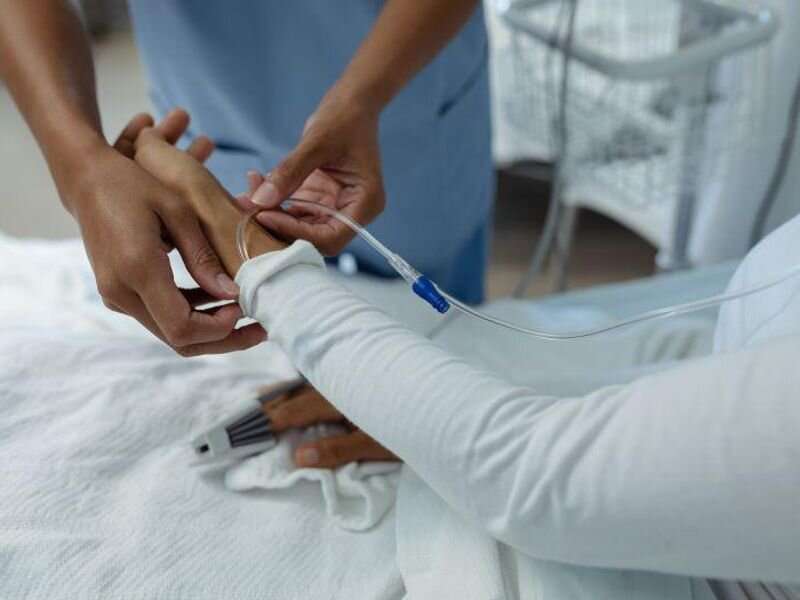Asian, Black, and Hispanic patients with COVID-19 have persistent overestimation of arterial oxygen saturation, according to a study published online May 31 in JAMA Internal Medicine.
Ashraf Fawzy, M.D., M.P.H., from the Johns Hopkins University School of Medicine in Baltimore, and colleagues conducted a retrospective cohort study of clinical data for COVID-19 patients who self-identified as Asian, Black, Hispanic, or White from five referral centers and community hospitals. Concurrent measurements of oxygen saturation levels were conducted in arterial blood (SaO2) and by pulse oximetry (SpO2); the proportion of patients with occult hypoxemia was compared by race and ethnicity. A total of 1,216 patients had 32,282 concurrently measured SpO2 and SaO2.
The researchers found that occult hypoxemia occurred in 30.2, 28.5, and 29.8 percent of Asian, Black, and non-Black Hispanic patients compared to 17.2 percent of White patients. SpO2 overestimated SaO2 by an average of 1.7, 1.2, and 1.1 percent among Asian, Black, and non-Black Hispanic patients, respectively, compared with White patients. Black and non-Black Hispanic patients had a lower risk of treatment eligibility recognition (hazard ratios, 0.71 and 0.77, respectively). Overall, 23.7 percent of patients never had their treatment eligibility recognized; 54.8 percent of these patients were Black. Of the patients who had eventual recognition of treatment eligibility, Black patients had a median delay of 1.0 hour compared with White patients.
"Differential inaccuracies in pulse oximetry should be examined as a potential explanation for disparities in COVID-19 outcomes and may have implications for the monitoring and treatment of other respiratory illnesses," the authors write.
One author disclosed financial ties to the pharmaceutical industry.
More information:
Abstract/Full Text
Editorial
Journal information: JAMA Internal Medicine
Copyright © 2022 HealthDay. All rights reserved.
























